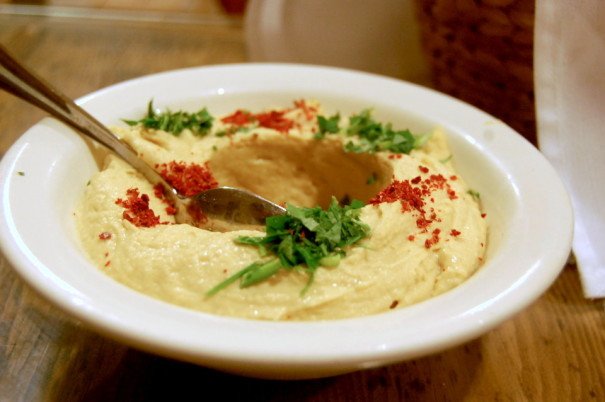
Working in Hell But Breakfasting in Tahini Heaven

Working in Hell But Breakfasting in Tahini Heaven
Tahini on the Kibbutz
It wasn’t the bohemian dream I expected it to be. I guess I was blinded by the past.
After the Six Day War between Israel and its neighboring states in 1967, thousands of hippies fell off the trail from London to Afghanistan to spend a few months volunteering on the kibbutzim that dotted Israel’s countryside. But I volunteered at Kibbutz Bar’am 40 years after the collapse of the hippie movement, when many of these communes—initially founded as socialist utopias—were starting to look less like socialist ideals and more like socialism in practice: hierarchies were real, and volunteers like me were at the bottom of the heap.
From 6.30 am Sunday to Thursday, dozens of us volunteers—hailing from South Korea and Sweden, the U.S., Colombia, and South Africa—would be packed beside conveyor belts in an airless factory warehouse, ready to shift tens of thousands of apples into boxes for distribution across the country. Some danced to their iPods. I tried and failed to stay sane by searching for Israel’s Next Top Apple.
Every two hours we had breaks in a dining hall big enough to hold 500 people; most chain-smoked on the balcony that looked out toward Lebanon and picked at what they’d chosen from the breakfast buffet: aisles and aisles of ersatz food that almost tasted good. Gluey porridge and scrambled eggs pale as sand, leftover rice from last night’s dinner and sweet chili sauce, chewy sandwich bread, on rare occasions, tahini…
Tahini!
Having only ever (barely) tasted it back home in supermarket hummus—hummus so pumped with garlic it may as well have been aïoli—I fell in love with the real thing.
Thick as wallpaper paste and no more attractive, tahini’s name has its roots in the Arabic verb ṭaḥana (طحن): “to grind.” Made from sesame seeds that have been soaked to remove the hull, then toasted and ground up to produce an oily paste, over the next few months in Israel, I almost invariably found that the foods I loved best contained indecent amounts of it: There were crumbling blocks of halva made glorious with sugar, tahini, and pistachio chunks. There was hummus, proper hummus that puckered my mouth with the tartness of the sesame seeds and lemon juice. It was served swimming in olive oil, ful (fava beans), and hot sauce, spiced with cumin and paprika and served with glistening chunks of raw white onion, handmade pita. Tahini was blended with lemon juice and olive oil to make dressings for the finely-diced cucumber, parsley, and tomato salads served at every dinner table. And it was in the halva-like tahini cookies we’d grab from the cafeteria on Shabbat.
I was in tahini heaven. And it made breakfast on the kibbutz something to look forward to rather than shy away from.
Riiiiiiiiiiiiiiiinnnnnnnnng!
Breakfast was already over?! Damn. Back to work. Israel’s Next Top Apple wasn’t going to find itself.